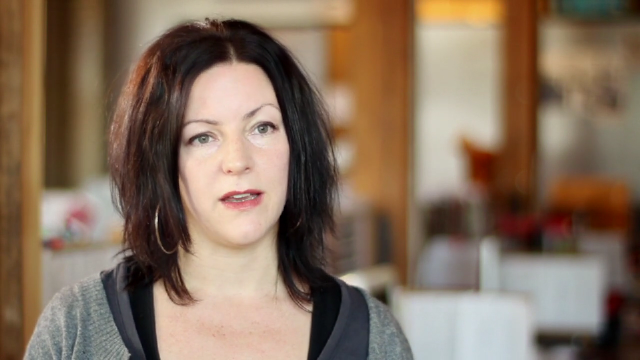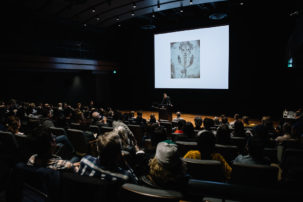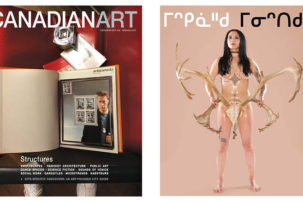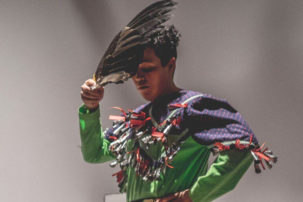Vancouver’s Kate Armstrong has an exciting practice that ranges from curating digital art to arranging electronic-billboard exhibitions to making sculptural installations. Her curatorial projects have been exhibited at the Vancouver Olympics, she has written for PS1/MoMA, and her art has been exhibited at Pace Digital Gallery, among other venues.
Armstrong says her interdisciplinary practice is driven by a variety of factors, but is particularly led by her interest in the social aspects of the Internet.
“I find the Internet is one of the main conditions of contemporary life,” Armstrong says, “and I like to think about and explore and investigate the Internet through art because it becomes an interesting vehicle for examining life.”
One recent work, Medium, fed pages of Marshall McLuhan’s The Medium is the Massage into the Internet and used an algorithm to locate similar images online. The results were compiled into a printed book of its own. Another piece, Path, is a 12-volume printed work which compiles the movements of a single Montreal individual using a collective Internet network over the course of two years.
“One of the strange things, and interesting things, to me about digital culture is that it is radically immaterial,” Armstrong says. “And yet it has these really far-reaching effects in real life. One of the interesting things about bringing digital material into something that’s physically manifest is the way that that exposes those tensions.”
Armstrong holds a bachelor of arts from Queen’s University and a master of philosophy in humanities fromMemorial University. She says her current career path was sparked while she was working on that master’s degree in her early twenties.
“I was writing my first book, a book of art theory, and I got access to the Internet for the first time,” she recalls. “It was in the really early days before Google, Facebook and Twitter; it was a very nascent space. I was interested in art already, and then with this early exposure to the Internet I became curious about how those two things could come together.”
To pursue this interest, Armstrong moved to Vancouver after completing her degree in St. John’s and worked with one of the city’s first Internet companies to develop the book that she had written into a CD-ROM. Later, she went to New York and connected with the net art movement there.
“It was interesting to me how [the net art movement] referenced earlier art historical movements,” she says. “So I started putting my own work online, and I found the immediacy of finding a community and an audience very gratifying.”
What may be unexpected to some observers is that Armstrong says there’s not much difference between curating exhibitions in galleries and online—“the processes are the same between the two in terms of research,” she notes.
Armstrong also says that “to be a good web artist, more important than the technical skills and the design skills are social skills and an understanding of or interest in social culture.”
Still, whether in bricks-and-mortar spaces or less tangible online ones, Armstrong remains excited about the potential of addressing the Internet through art, writing and curatorial work.
“It just blows my mind the impact that the Internet has on today’s culture,” she says. “I mean, there’s a billion people on Facebook. I think 90 per cent of the world’s information has been generated in the past two years.”
“So for me, more and more, this question [of the Internet and society] has relevance,” she explains. “I kind of don’t know how to make work that’s not about it in some way or another.”
Image: Kate Armstrong in conversation. Photo: Anjay Feldano.









